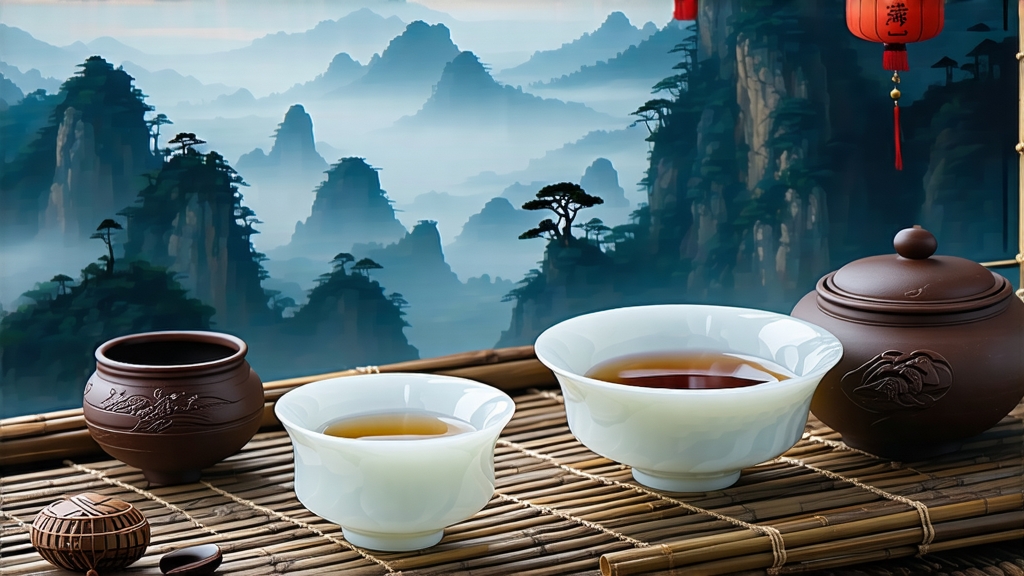
If oolong is the poetry of Chinese tea, then Phoenix Dancong is the love song of Guangdong. Nestled in the granite spine of Phoenix Mountain in northern Guangdong, this “single-bush” oolong has been seducing scholars, merchants, and emperors since the Song Dynasty with its uncanny ability to mimic the scent of flowers, fruits, and even honey. Unlike the garden-style terraces of Wuyi or Anxi, Dancong trees stand alone—gnarled, half-wild, often older than the village houses they shade. Each tree is a cultivar unto itself, and for centuries farmers have given them romantic names: “Honey Orchid,” “Almond Fragrance,” “Night-Blooming Jasmine.” One sip and you understand why locals say the mountain “teaches the leaf to remember its own perfume.”
Historical Roots
The first written record appears in 960 CE, when Song imperial troops stationed at Fenghuang (Phoenix) noticed local She ethnic people brewing leaves that smelled like osmanthus. Tribute status was granted by the late Ming; Qing-era gazetteers list 72 named “mother trees” still alive today. During the 1870s, Chaozhou merchants carried Dancong down the Han River to Shantou’s treaty port, where foreign buyers rebranded it “Chinese aromatic oolong” and shipped it to Southeast Asia and San Francisco. The 1980s economic liberalization revived clonal propagation, yet the most sought-after lots remain those picked from the ancient high-elevation singletons, some exceeding 600 years.
Micro-terroir
Phoenix Mountain rises abruptly from the subtropical delta to 1,498 m. Diurnal swings of 15 °C, year-round fog, and highly weathered granite soils force slow growth, concentrating aromatic precursors. Elevation bands are codified into three grades: “low” (below 400 m), “middle” (400–800 m), and “high cloud” (above 800 m). Only the latter earns the coveted “Lao Cong” (old bush) designation, where roots dive three meters to sip mineral-rich groundwater. Every March, cool mist drifts through the canyons, coaxing the leaf’s volatile linalool and geraniol to levels triple those of valley bushes.
Varietal Lexicon
Government agricultural surveys catalog 79 existing Dancong fragrance profiles, grouped into ten classical “xiang” (aromas). Among connoisseurs, the “Top Ten” reign supreme:
- Huangzhi Xiang (Honey Orchid) – deep orange liquor, lingering peach-apricot note.
- Xingren Xiang (Almond) – roasted nut bouquet, creamy finish.
- Milan Xiang (Honey Orchid variant) – lighter body, orchid aftertaste.
- Yulan Xiang (Magnolia) – broad leaves, magnolia punch on third infusion.
- Zhilan Xiang (Gardenia) – greenish vein, gardenia-laced sweetness.
- Wudong Xiang (Wudong Mountain) – mineral backbone, alpine coolness.
- Jianghua Xiang (Ginger Flower) – subtle spice, tingling throat.
- Youhua Xiang (Pomelo) – citrus peel aroma, brisk astringency.
- Guihua Xiang (Osmanthus) – honeyed osmanthus, golden liquor.
- Rougui Xiang (Cassia) – warm baking spice, Wuyi-like depth.
Each name reflects not added flavoring but the cultivar’s innate chemistry, amplified by craft.
Plucking Code
Timing is obsessive: leaves must be picked when the morning dew just evaporates but before the noon sun wilts the edges. Standard is “zhong kai mian” (medium opening): two leaves and a bud whose tip angles 45° to the stem, indicating optimal polyphenol balance. High-cloud gardens still hand-pick into small bamboo sieves to prevent compression; a skilled worker harvests barely four kilograms of fresh leaf per day, enough for less than one kilogram of finished tea.
Crafting the Fragrance
Dancong’s 24-hour transformation is a choreography of solar withering, indoor oxidation, and charcoal matrimony.
- Solar Withering: Leaves are spread 2 cm thick on bamboo trays under late-March sun for 20–30 minutes, turned every ten. Cells